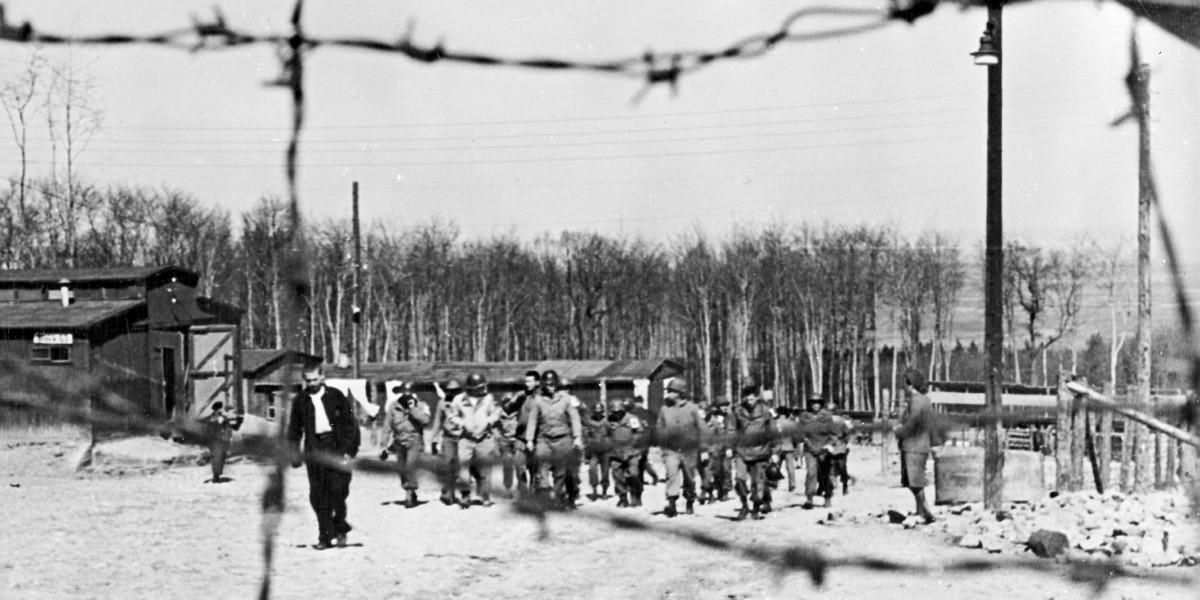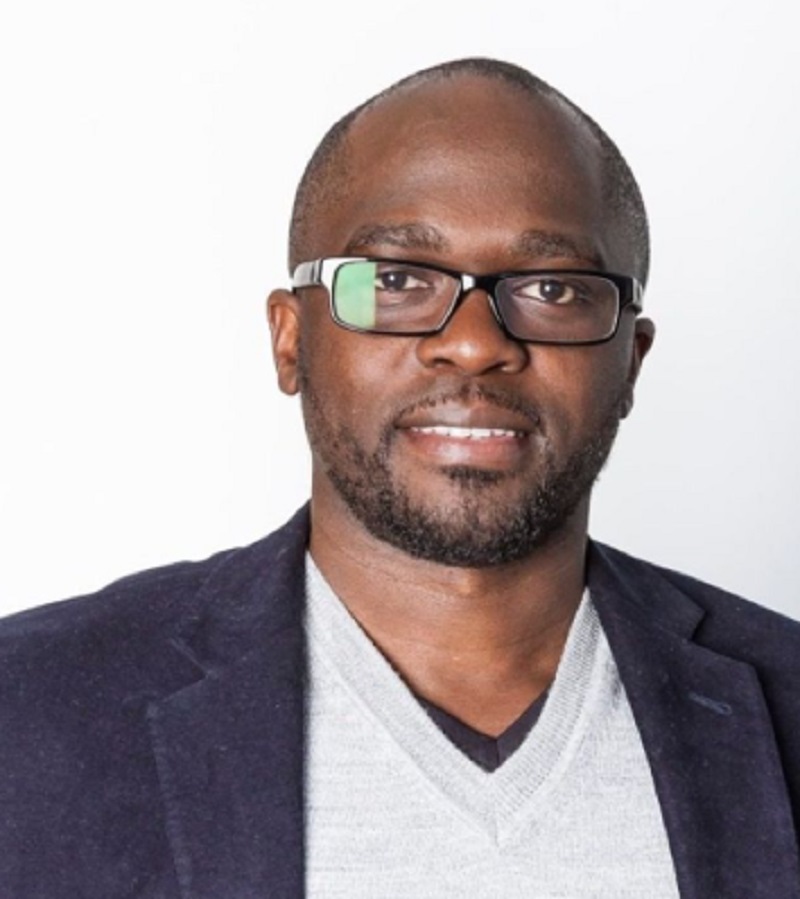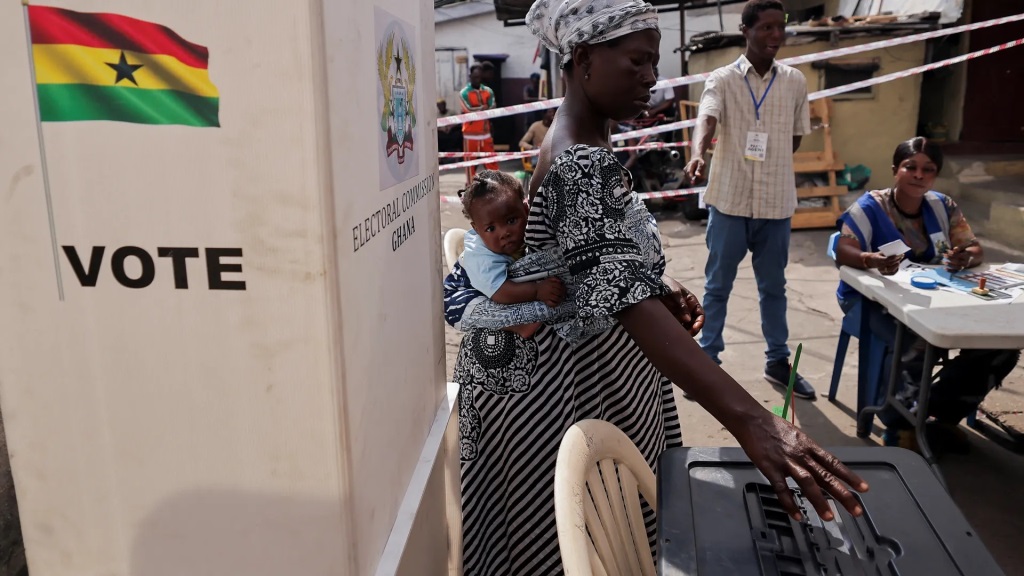Feature/OPED
World Holocaust Day – Untold Story of A Religious Group’s Stand Up to Nazi Regime

As many around the globe commemorate the 97th International Holocaust Remembrance Day (also known as World Holocaust Day or IHRD) today January 27, it is a time to reflect on the inhumane treatment meted out to groups seen as opposed to the Nazi regime and the world’s response to genocide since the end of World War 2. One of the groups targeted by the Nazi regime was Jehovah’s Witnesses who were among the first to be sent to the Death Camp.
For many, the observance of the liberation of Auschwitz-Birkenau Concentration Camp which forms the basis of the World Holocaust Day commemoration on January 27 is a sobering reminder of the atrocities of which man is capable against his fellow man. To this end, World Holocaust Day has been commemorating victims of the holocaust and promoting and preserving the educational and historical significance of that sad aspect of world history.
During its nearly five years of operation, Auschwitz expanded to include a concentration camp, a forced-labor camp, and an extermination camp, as well as over 40 subcamps. Here, the Nazi regime executed some of the most agonizing human rights abuses against millions of Jews, as well as Poles, Slavs, Romans and Sinti, homosexuals, and people with disabilities, among others. Some 400 Jehovah’s Witnesses of various nationalities, including Polish and German, were also among those victimized at the infamous camp. Four gas chambers claimed as many as 6,000 prisoners’ lives daily.
A purple-triangle patch stitched near the prisoner number on the left side of uniforms identified the Witnesses who were imprisoned, not for their national or ethnic identity, but for their religious beliefs.
On Saturday, Jan. 27, 1945, the Soviet Union’s Red Army liberated some 7,000 prisoners from the death complex.
“The Witnesses’ moral principles and practices did not align with the Nazi ideology of racism, hate, and extreme nationalism. Because of this, the activity of Jehovah’s Witnesses was targeted by the Nazi Government, and they were banned throughout Germany as early as 1933,” said Joseph Fajuke, a local spokesperson for Jehovah’s Witnesses. He adds: “How the Witnesses held on to their faith as they faced the daily cruelties of Auschwitz is a little-known part of Nazi-era history. Anyone with a strong conviction will find their story compelling.”
“On the scale of Auschwitz’s huge community, the Jehovah’s Witnesses constituted but a tiny, inconspicuous little group,” said sociologist and Auschwitz survivor Anna Pawełczyńska. “Nevertheless, the colour of their triangular badge stood out so clearly in the camp that the small number does not reflect the actual strength of that group. This little group of prisoners was a solid ideological force, and they won their battle against Nazism.”
Auschwitz-Birkenau State Museum records indicate that Jehovah’s Witnesses were among the first prisoners sent to the camp. Of the hundreds of Witnesses incarcerated at Auschwitz, at least 35 per cent died there.
The museum’s website states: “Aside from brief mentions, the literature on the history of Auschwitz Concentration Camp does not take account of the Jehovah’s Witnesses (referred to in the camp records as Bible Students]) who were imprisoned because of their religious convictions. These prisoners deserve closer attention because of the way they managed to hold on to their moral principles under camp conditions.”
“They were persecuted solely based on their religious convictions,” says, Olusegun Eroyemi, National spokesperson for Jehovah’s Witnesses in Nigeria. “The Nazis offered them freedom if they would renounce their Christian faith and support the regime. Yet, they dared to stick to Christian values—loyalty to God and love for others.”
This year, as conferences and exhibitions related to the 79th anniversary of the Auschwitz liberation take place around the world, Jehovah’s Witnesses have released a digital brochure titled: “Purple Triangles – “Forgotten Victims” of the Nazi Regime”. The 32-page brochure is available for free download on their official website, jw.org, and presents a selection of pictures and documents from a travelling exhibition curated by the Witnesses to educate the public about their persecution during the Holocaust.
The 50 three-dimensional panels as contained in the brochure were exhibited at several memorial museums of former concentration camps and educational institutions throughout Europe.
About 600,000 visitors had viewed the exhibit by the end of 2002.
Additionally, the Ghetto Fighters’ House Museum, the first Holocaust Museum in the world, is currently featuring an interactive exhibition that highlights the Witnesses’ courageous stand in the face of Nazi Persecution.
The exhibition is titled “Wedontdothat,” inspired by the nickname given to Joachim Alfermann, one of Jehovah’s Witnesses persecuted by the Nazis. It is presented in Arabic, English, and Hebrew and will be on display until September 2024 at the museum’s Center for Humanistic Education in Western Galilee, Israel.
To view the free and downloadable brochure, visit jw.org > Library > Books & Brochures > Purple Triangles – “Forgotten Victims” of the Nazi Regime.
“Jehovah’s Witnesses were the only Christian group under the Third Reich to be marked by a separate prisoner symbol—the purple triangle“ – Professor Detlef Garbe, former director of the Neuengamme Concentration Camp Memorial.
Feature/OPED
The Future of Payments: Key Trends to Watch in 2025

By Luke Kyohere
The global payments landscape is undergoing a rapid transformation. New technologies coupled with the rising demand for seamless, secure, and efficient transactions has spurred on an exciting new era of innovation and growth. With 2025 fast approaching, here are important trends that will shape the future of payments:
1. The rise of real-time payments
Until recently, real-time payments have been used in Africa for cross-border mobile money payments, but less so for traditional payments. We are seeing companies like Mastercard investing in this area, as well as central banks in Africa putting focus on this.
2. Cashless payments will increase
In 2025, we will see the continued acceleration of cashless payments across Africa. B2B payments in particular will also increase. Digital payments began between individuals but are now becoming commonplace for larger corporate transactions.
3. Digital currency will hit mainstream
In the cryptocurrency space, we will see an increase in the use of stablecoins like United States Digital Currency (USDC) and Tether (USDT) which are linked to US dollars. These will come to replace traditional cryptocurrencies as their price point is more stable. This year, many countries will begin preparing for Central Bank Digital Currencies (CBDCs), government-backed digital currencies which use blockchain.
The increased uptake of digital currencies reflects the maturity of distributed ledger technology and improved API availability.
4. Increased government oversight
As adoption of digital currencies will increase, governments will also put more focus into monitoring these flows. In particular, this will centre on companies and banks rather than individuals. The goal of this will be to control and occasionally curb runaway foreign exchange (FX) rates.
5. Business leaders buy into AI technology
In 2025, we will see many business leaders buying into AI through respected providers relying on well-researched platforms and huge data sets. Most companies don’t have the budget to invest in their own research and development in AI, so many are now opting to ‘buy’ into the technology rather than ‘build’ it themselves. Moreover, many businesses are concerned about the risks associated with data ownership and accuracy so buying software is another way to avoid this risk.
6. Continued AI Adoption in Payments
In payments, the proliferation of AI will continue to improve user experience and increase security. To detect fraud, AI is used to track patterns and payment flows in real-time. If unusual activity is detected, the technology can be used to flag or even block payments which may be fraudulent.
When it comes to user experience, we will also see AI being used to improve the interface design of payment platforms. The technology will also increasingly be used for translation for international payment platforms.
7. Rise of Super Apps
To get more from their platforms, mobile network operators are building comprehensive service platforms, integrating multiple payment experiences into a single app. This reflects the shift of many users moving from text-based services to mobile apps. Rather than offering a single service, super apps are packing many other services into a single app. For example, apps which may have previously been used primarily for lending, now have options for saving and paying bills.
8. Business strategy shift
Recent major technological changes will force business leaders to focus on much shorter prediction and reaction cycles. Because the rate of change has been unprecedented in the past year, this will force decision-makers to adapt quickly, be decisive and nimble.
As the payments space evolves, businesses, banks, and governments must continually embrace innovation, collaboration, and prioritise customer needs. These efforts build a more inclusive, secure, and efficient payment system that supports local to global economic growth – enabling true financial inclusion across borders.
Luke Kyohere is the Group Chief Product and Innovation Officer at Onafriq
Feature/OPED
Ghana’s Democratic Triumph: A Call to Action for Nigeria’s 2027 Elections

In a heartfelt statement released today, the Conference of Nigeria Political Parties (CNPP) has extended its warmest congratulations to Ghana’s President-Elect, emphasizing the importance of learning from Ghana’s recent electoral success as Nigeria gears up for its 2027 general elections.
In a statement signed by its Deputy National Publicity Secretary, Comrade James Ezema, the CNPP highlighted the need for Nigeria to reclaim its status as a leader in democratic governance in Africa.
“The recent victory of Ghana’s President-Elect is a testament to the maturity and resilience of Ghana’s democracy,” the CNPP stated. “As we celebrate this achievement, we must reflect on the lessons that Nigeria can learn from our West African neighbour.”
The CNPP’s message underscored the significance of free, fair, and credible elections, a standard that Ghana has set and one that Nigeria has previously achieved under former President Goodluck Jonathan in 2015. “It is high time for Nigeria to reclaim its position as a beacon of democracy in Africa,” the CNPP asserted, calling for a renewed commitment to the electoral process.
Central to CNPP’s message is the insistence that “the will of the people must be supreme in Nigeria’s electoral processes.” The umbrella body of all registered political parties and political associations in Nigeria CNPP emphasized the necessity of an electoral system that genuinely reflects the wishes of the Nigerian populace. “We must strive to create an environment where elections are free from manipulation, violence, and intimidation,” the CNPP urged, calling on the Independent National Electoral Commission (INEC) to take decisive action to ensure the integrity of the electoral process.
The CNPP also expressed concern over premature declarations regarding the 2027 elections, stating, “It is disheartening to note that some individuals are already announcing that there is no vacancy in Aso Rock in 2027. This kind of statement not only undermines the democratic principles that our nation holds dear but also distracts from the pressing need for the current administration to earn the trust of the electorate.”
The CNPP viewed the upcoming elections as a pivotal moment for Nigeria. “The 2027 general elections present a unique opportunity for Nigeria to reclaim its position as a leader in democratic governance in Africa,” it remarked. The body called on all stakeholders — including the executive, legislature, judiciary, the Independent National Electoral Commission (INEC), and civil society organisations — to collaborate in ensuring that elections are transparent, credible, and reflective of the will of the Nigerian people.
As the most populous African country prepares for the 2027 elections, the CNPP urged all Nigerians to remain vigilant and committed to democratic principles. “We must work together to ensure that our elections are free from violence, intimidation, and manipulation,” the statement stated, reaffirming the CNPP’s commitment to promoting a peaceful and credible electoral process.
In conclusion, the CNPP congratulated the President-Elect of Ghana and the Ghanaian people on their remarkable achievements.
“We look forward to learning from their experience and working together to strengthen democracy in our region,” the CNPP concluded.
Feature/OPED
The Need to Promote Equality, Equity and Fairness in Nigeria’s Proposed Tax Reforms

By Kenechukwu Aguolu
The proposed tax reform, involving four tax bills introduced by the Federal Government, has received significant criticism. Notably, it was rejected by the Governors’ Forum but was still forwarded to the National Assembly. Unlike the various bold economic decisions made by this government, concessions will likely need to be made on these tax reforms, which involve legislative amendments and therefore cannot be imposed by the executive. This article highlights the purposes of taxation, the qualities of a good tax system, and some of the implications of the proposed tax reforms.
One of the major purposes of taxation is to generate revenue for the government to finance its activities. A good tax system should raise sufficient revenue for the government to fund its operations, and support economic and infrastructural development. For any country to achieve meaningful progress, its tax-to-GDP ratio should be at least 15%. Currently, Nigeria’s tax-to-GDP ratio is less than 11%. The proposed tax reforms aim to increase this ratio to 18% within the next three years.
A good tax system should also promote income redistribution and equality by implementing progressive tax policies. In line with this, the proposed tax reforms favour low-income earners. For example, individuals earning less than one million naira annually are exempted from personal income tax. Additionally, essential goods and services such as food, accommodation, and transportation, which constitute a significant portion of household consumption for low- and middle-income groups, are to be exempted from VAT.
In addition to equality, a good tax system should ensure equity and fairness, a key area of contention surrounding the proposed reforms. If implemented, the amendments to the Value Added Tax could lead to a significant reduction in the federal allocation for some states; impairing their ability to finance government operations and development projects. The VAT amendments should be holistically revisited to promote fairness and national unity.
The establishment of a single agency to collect government taxes, the Nigeria Revenue Service, could reduce loopholes that have previously resulted in revenue losses, provided proper controls are put in place. It is logically easier to monitor revenue collection by one agency than by multiple agencies. However, this is not a magical solution. With automation, revenue collection can be seamless whether it is managed by one agency or several, as long as monitoring and accountability measures are implemented effectively.
The proposed tax reforms by the Federal Government are well-intentioned. However, all concerns raised by Nigerians should be looked into, and concessions should be made where necessary. Policies are more effective when they are adapted to suit the unique characteristics of a nation, rather than adopted wholesale. A good tax system should aim to raise sufficient revenue, ensure equitable income distribution, and promote equality, equity, and fairness.
-

 Feature/OPED5 years ago
Feature/OPED5 years agoDavos was Different this year
-
Travel/Tourism8 years ago
Lagos Seals Western Lodge Hotel In Ikorodu
-

 Showbiz2 years ago
Showbiz2 years agoEstranged Lover Releases Videos of Empress Njamah Bathing
-

 Banking6 years ago
Banking6 years agoSort Codes of GTBank Branches in Nigeria
-

 Economy2 years ago
Economy2 years agoSubsidy Removal: CNG at N130 Per Litre Cheaper Than Petrol—IPMAN
-

 Banking2 years ago
Banking2 years agoFirst Bank Announces Planned Downtime
-

 Sports2 years ago
Sports2 years agoHighest Paid Nigerian Footballer – How Much Do Nigerian Footballers Earn
-

 Technology4 years ago
Technology4 years agoHow To Link Your MTN, Airtel, Glo, 9mobile Lines to NIN




















